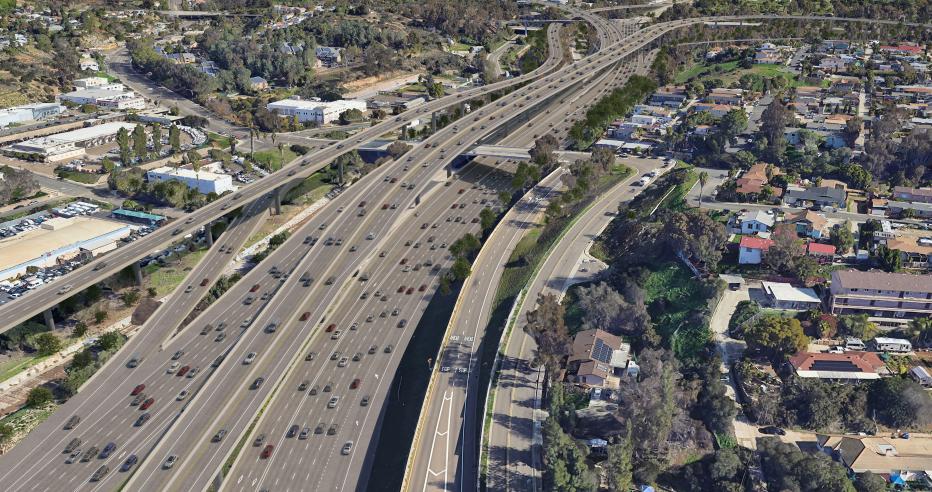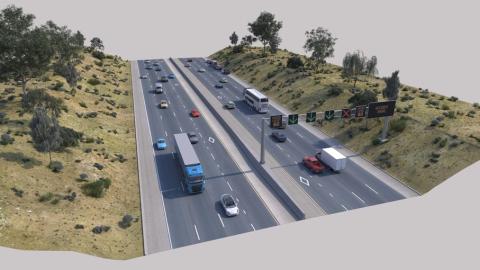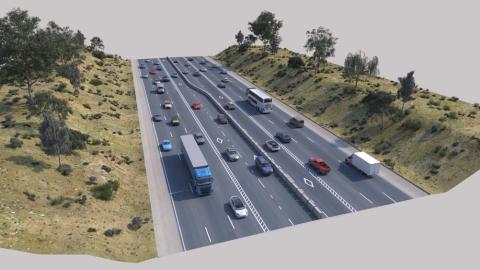SR 94 Express Lanes Alternatives and Feasibility Study
Focusing on a more equitable transportation alternative that promotes mode shift for improved air quality and reduced congestion in San Diego

With population growing and infrastructure needs changing along with it, the San Diego region is looking to expand its network of managed lanes and improve access to high-frequency and reliable transit, reduce greenhouse gas emissions, and create an equitable transportation network to achieve their vision for “A fast, fair, and clean transportation system and a resilient region.”
So, San Diego Association of Governments (SANDAG) and their agency stakeholder partners, California Department of Transportation (Caltrans) and the City of San Diego, engaged Jacobs to prepare a feasibility study for adding managed lanes along a critical segment of the network.
Solving historical transportation challenges, with innovative solutions…
This segment of State Route 94 links major population and employment centers of Central San Diego, East County, South Bay and the I-15 Corridor. Managed Lanes in this corridor would enhance multimodal travel options for the entire region – connecting existing and planned managed lanes in other corridors to central San Diego. By incentivizing a modal shift toward high occupancy vehicles and transit, the region aims to meet climate action goals of reducing greenhouse gas emissions and improving air quality.
Construction of the freeway between the 1950s and 1970s displaced residences and divided historic and disadvantaged, formerly red-lined communities. Additionally, the three system and five local service interchanges have been condensed into a span of just three miles with geometry that does not meet today’s standards. The segment also experiences heavy congestion during peak hours contributing to significantly higher accident rates.
Aiming to mitigate these historical challenges with the new alternatives, our team led stakeholder workshops and worked with a technical advisory committee to develop three alternatives for adding managed lanes and managed lane direct connectors that minimize project footprint, avoid full right of way takes and enhance safety while being responsive to community input.
Innovative solutions developed by our team include a minimum footprint alternative with extensive intelligent transportation systems components and advanced traffic and demand management strategies to maximize the use of existing capacity, inform travelers in real time and promote active management during incidents, shown in the image on the left above. Another innovative alternative comprised a moveable median barrier that allows flexibility to provide additional managed lane capacity in the peak commute direction while minimizing outside widening, shown on the right above.
The third alternative with most managed lanes connectivity value tackled the extremely limited right of way by relocating the managed lanes connectors into one area, using multi-layered structure to connect to southbound I-805 and also northbound I-805, as shown at the top of the page.
… for enhanced connectivity and mobility for tomorrow
Throughout the six month, fast-paced schedule, Jacobs effectively and efficiently identified 23 managed lanes alternatives and variations to be considered for the next stage of this project. The team presented the first set of preliminary alternatives to the stakeholders. Stakeholders included SANDAG, Caltrans D11 Branch Chiefs, San Diego Metropolitan Transit System (MTS) and City of San Diego.
The alternatives then got narrowed down to 14 different variations, which were assessed and evaluated by the technical advisory committee and project development team, based on agreed upon criteria such as managed lanes connectivity, community enhancements, safety and traffic operations issues, design and ROW issues. The committee selected three alternatives for further analysis and details, based on level one screening process. The three alternatives were then carried forward for functional design, along with traffic analysis, constructability and phasing concepts, Advanced Traffic and Demand Management strategies and cost estimates. The findings have been presented to the Stakeholders in a second workshop and now, the feasibility report is being assembled for final delivery.
SANDAG and Caltrans also selected Jacobs to support the development of a Comprehensive Multimodal Corridor Plan (CMCP) for the State Route 94 Corridor. Through community engagement, collaboration with local agencies and data analysis the CMCP will seek to synthesize local, regional, and state planning to create a comprehensive vision for enhancing multimodal connectivity and accessibility throughout the corridor.
“On a complex project like this, the moment you realize you were able to deliver solutions that provide community and regional benefits – all while minimizing right of way takes, promoting safer designs, and reducing environmental impacts – is when you really feel job satisfaction. The team collaboration to get this fast-paced study delivered was phenomenal; very impressive team to work with.”
Did you know?
-
3 +
mile project span, including 5 service interchanges and 3 system interchanges
-
2
environmentally sensitive creeks within the project span
-
25
new, replaced or widened bridges are part of the project scope
-
15
buildings along the project are eligible or assumed eligible for listing in the National Register of Historic Places
















































